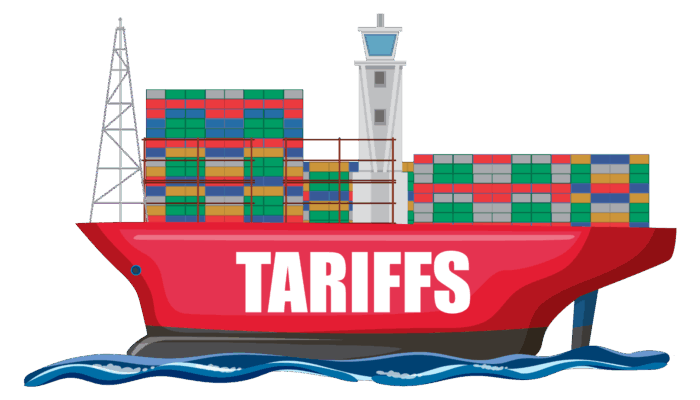Have you ever received a split shipment? For example, after ordering more than one product (possibly from Amazon), did you receive items in separate packages over multiple days? If so, then you’ve received split shipments. This often happens automatically when different items in an order are fulfilled from different locations. The sender got your items to you in the fastest way possible. That’s all that matters, right?
It depends. There are other things that you probably don’t think about as a consumer or a business. For example, as a consumer, do you prioritize speed or sustainability? And as a business, how do you balance the scale between customer experience and cost? These considerations just scratch the surface of the many considerations that can go into split shipments.
Did you know that if you ship from just 100 locations, for every split shipment there are potentially 4,950 ways to fulfill an order? That’s a lot! (Calculate your number here.)
So let’s answer some important questions about split shipments to help you minimize costs and maximize customer experience.
1. What are split shipments?
The meaning of split shipments is quite simple: When an online order that contains multiple products is fulfilled in separate shipments it’s considered a split shipment. Even though the customer made only one order, they receive multiple packages, often on different days.
2. Why do shipments get split?
There are many reasons why a retailer will split shipments. The most common is that each of the SKUs in the order is warehoused in different locations. Some might be at a Distribution Center (DC) while others are part of a store’s inventory. Instead of waiting to consolidate all the items in a single location, they are shipped directly from each, resulting in multiple deliveries. The upside is that the products get to the customer quicker. But as most retailers know, the costs can be high.
3. Should businesses split shipments or not?
This is actually the wrong question. It’s not whether you do it or not. It’s why you do it. Common reasons include the location of items in an order (distance to customer), the size of an item (bulky or heavy), or what fits in the box being packed.
But the reasons should be smarter. And they can be. Think profit margin, sell-through rate, customer type, and more. The right question is: What is the best split shipment strategy for my business?
4. Can customers make the decision to split shipments?
Yes. If customers prioritize speed, they’re likely receiving each item of an order however they can. Retailers give the options like:
- Receive order item by X date (selecting a date for each item)
- Receive order items same day with fewer deliveries
- Receive order items together with fewer boxes/packaging
Another example is during the holiday season when people are gifting through online stores. Savvy retailers make it easy for gifters to order multiple products for different people and addresses without having to create separate orders.
5. Why are split shipments considered a ‘problem’?

Cost. For every split shipment, there is an additional shipping fee to pay. The more shipments you send, the more you—or the customer—will pay.
In countries like the U.S., postal service charges are based on shipping zones, so the final cost to the same destination may be different.
Europe has a different carrier model. In the EU, carriers may switch each time they cross borders, which drives up fulfillment costs.
An example of shipping costs:
Number of Orders per Year: 1,000,000
Average Shipping Costs per Order: $5.00
Split Shipment Rate: 1.8
Total Shipping Costs: $9,000,000
Average Shipping Cost per Order: $9 (almost double the $5 before split shipments)
Not to mention if you have to cross borders, switch carriers, or country taxes. It adds up fast. Learn more about optimizing split shipments here.
6. How split shipments impact the customer experience?
Receiving multiple packages for a single order is not an ideal customer experience. It can be confusing if separate packages arrive over the course of several days. Of course, the alternative—holding the order until everything is available to fulfill—isn’t great for the customer either. The key here is to manage customer expectations from the start. If you’re going to split an order, let them know as soon as possible so they’ll know what to expect.
The customer should have the opportunity to choose their experience.
For example, give customers an eco-friendly choice. 44% of consumers are more inclined to purchase from a company that has a strong commitment to sustainability. A sustainable shipping choice could be a later delivery date. With that, your business can:
- Consolidate the order items in the most sustainable way (bringing items together that might take longer but maybe eliminate air transport)
- Reduce packaging waste with all order items going into a single package
- Deliver the order in one shipment to the end customer (reducing multiple delivery trucks taking items at different times)
What’s more: It turns out, what’s better for the environment can also be more cost-effective for business. Learn more on how to reduce your carbon footprint.
7. How can a business optimize split shipments?
Split shipments come down to 1) customer experience and 2) business strategy. Decide your business strategy when it comes to split shipments, and what options you want to provide your customer. Read more on 10 ways to optimize split shipments to expand on the following:
- Optimized real-time inventory data
- Better safety stock management
- Intelligent order sourcing
- Distance-based sourcing
- Inventory-based sourcing
- Capacity-based sourcing
- SKU Velocity-based sourcing
- Priority-based sourcing
- Cost-based sourcing
- Seasonality-based sourcing
- Get to know your customers
For more information on how Fluent Order Management can help you manage split shipments, contact us today.




